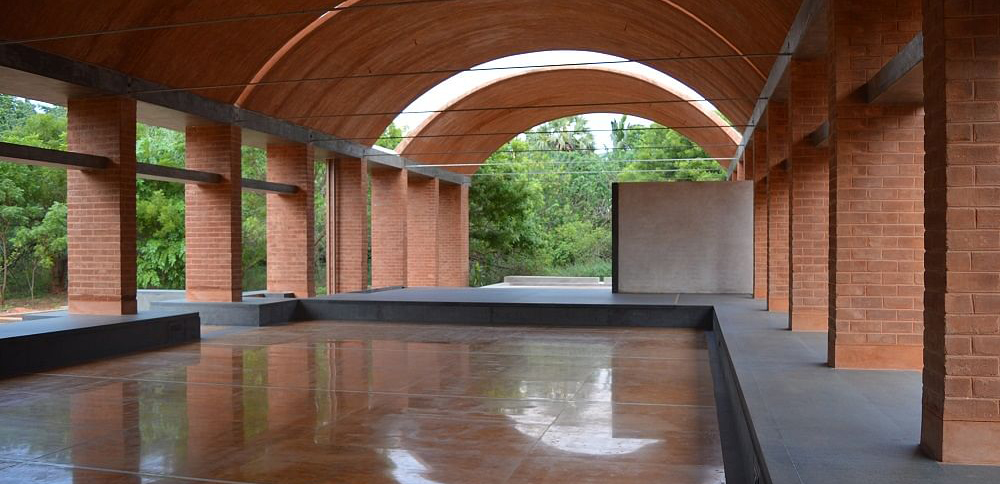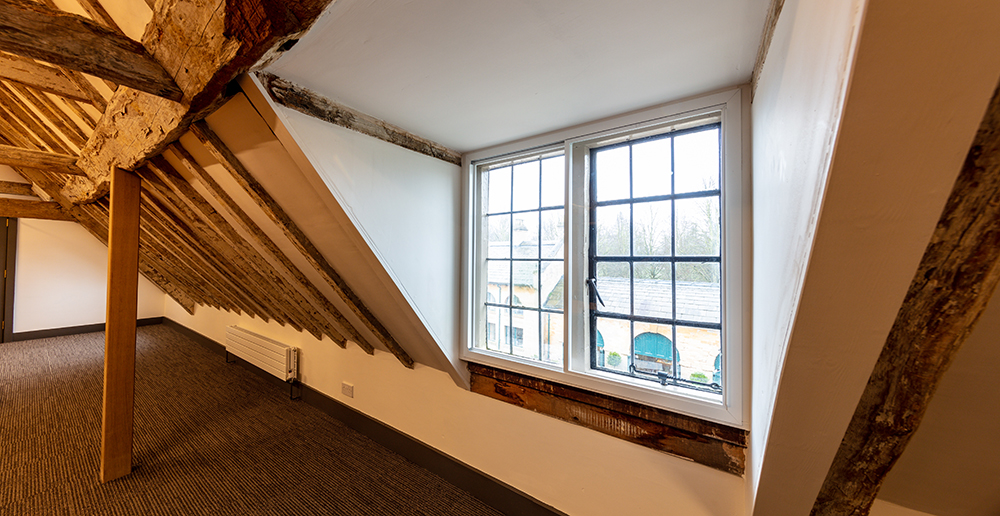 The built environment has a critical role in reducing greenhouse gas emissions (Image credit Eurodiaconia)
COP 26
The built environment has a critical role in reducing greenhouse gas emissions (Image credit Eurodiaconia)
COP 26 starts on the 31
st of October 2021 and runs until the 12
th of November 2021. It is the 26
th United Nations Climate Change Conference with Glasgow playing host to leaders representing 190 members of the United Nations including climate change activists and authorities and could mark a critical moment for mankind. Will it be a substantial step forward?
The built environment will play a critical role in the quest to reduce greenhouse gas emissions because buildings and construction are responsible for almost 40% of carbon emissions. So, we must change the way buildings are designed, constructed and managed, otherwise we will continue to be part of the reason why global temperatures will rise by more than 1.5°C and 2°C during the century.
In a bid to push the built environment sector to upscale its abilities and to set out bold recommendations to governments, the
Royal Institute of British Architects (RIBA) has partnered up with
Architects Declare to publish
Built for the Environment.
The 78-page report brings together a huge compilation of projects and reports submitted by built environment professionals worldwide as an evidence base to detail the methods in which the sector must drastically decarbonise to work towards net zero.
It has been heavily endorsed by organisations such as the World Green Building Council, contractor Wates and architects Austin-Smith:Lord. The report trails the two-day virtual Built Environment Summit, also organised by RIBA and Architects Declare which took place on the 28
th and 29
th October providing an opportunity to get the sector to unite and to draw attention to the built environment ahead of COP 26.
 Sharanam Centre in Pondicherry, India is a rural development centre using sustainable materials such as sieved pebbles from a landscape blighted by illegal quarrying. (Image credit: the better india)
Sharanam Centre in Pondicherry, India is a rural development centre using sustainable materials such as sieved pebbles from a landscape blighted by illegal quarrying. (Image credit: the better india)
A summary of the proposals in the Built for the Environment Report:
- Governments to guarantee their environmental targets are science-based and fair, so greenhouse gas emissions are reported on a consumption-basis
- Governments to concentrate on reducing absolute emissions instead of reductions per square meter of building area, or per person
- Governments must pursue mitigation and adaptation towards the climate and biodiversity crisis using nature-based solutions
- Those working in the built environment to modify practices: breaking down silos between disciplines and competencies, sharing information and shifting ideas of design
- Information on land, buildings, ecosystems, infrastructure, knowledge and skills must be openly and widely shareable. This will allow for collaborative efforts and transparent decision making
- Social justice to stay firmly at the core of all action: e.g. procurement processes considering social value, contracts awarded on criteria like social sustainability or innovation – not the lowest cost
- Refurbish, retrofit and extend the life of existing buildings to avoid embodied carbon emissions using sustainable product choices such as secondary glazing
 The Grade I Listed Belton House stables restoration where Selectaglaze installed secondary glazing in offices, retaining the embodied carbon in the primary windows
The Grade I Listed Belton House stables restoration where Selectaglaze installed secondary glazing in offices, retaining the embodied carbon in the primary windows
RIBA President, Simon Allford, said: “
This timely report emphasises the critical role our professions can and must play to tackle the climate emergency, and clearly states where we require change, particularly within challenging political landscapes and inadequate policies. Industry and governments need to work together to accelerate the global decarbonisation of buildings. I encourage the entire sector to endorse and amplify the report’s recommendations – we must speak with one voice to deliver a clear and urgent message.”
The technology and know-how are there in order to deliver a fair and sustainable built environment. Furthermore, there is a commitment to scaling up and adopting the best practices. This will not only achieve environmental, but social, economic, health and wellbeing benefits. Reports like this serve a much-needed purpose in pushing the ability of governments to provide the necessary infrastructure, regulation, and support and to simply the sector’s complex systems. This will hopefully enable change.
 The built environment has a critical role in reducing greenhouse gas emissions (Image credit Eurodiaconia)
COP 26 starts on the 31st of October 2021 and runs until the 12th of November 2021. It is the 26th United Nations Climate Change Conference with Glasgow playing host to leaders representing 190 members of the United Nations including climate change activists and authorities and could mark a critical moment for mankind. Will it be a substantial step forward?
The built environment will play a critical role in the quest to reduce greenhouse gas emissions because buildings and construction are responsible for almost 40% of carbon emissions. So, we must change the way buildings are designed, constructed and managed, otherwise we will continue to be part of the reason why global temperatures will rise by more than 1.5°C and 2°C during the century.
In a bid to push the built environment sector to upscale its abilities and to set out bold recommendations to governments, the Royal Institute of British Architects (RIBA) has partnered up with Architects Declare to publish Built for the Environment.
The 78-page report brings together a huge compilation of projects and reports submitted by built environment professionals worldwide as an evidence base to detail the methods in which the sector must drastically decarbonise to work towards net zero.
It has been heavily endorsed by organisations such as the World Green Building Council, contractor Wates and architects Austin-Smith:Lord. The report trails the two-day virtual Built Environment Summit, also organised by RIBA and Architects Declare which took place on the 28th and 29th October providing an opportunity to get the sector to unite and to draw attention to the built environment ahead of COP 26.
The built environment has a critical role in reducing greenhouse gas emissions (Image credit Eurodiaconia)
COP 26 starts on the 31st of October 2021 and runs until the 12th of November 2021. It is the 26th United Nations Climate Change Conference with Glasgow playing host to leaders representing 190 members of the United Nations including climate change activists and authorities and could mark a critical moment for mankind. Will it be a substantial step forward?
The built environment will play a critical role in the quest to reduce greenhouse gas emissions because buildings and construction are responsible for almost 40% of carbon emissions. So, we must change the way buildings are designed, constructed and managed, otherwise we will continue to be part of the reason why global temperatures will rise by more than 1.5°C and 2°C during the century.
In a bid to push the built environment sector to upscale its abilities and to set out bold recommendations to governments, the Royal Institute of British Architects (RIBA) has partnered up with Architects Declare to publish Built for the Environment.
The 78-page report brings together a huge compilation of projects and reports submitted by built environment professionals worldwide as an evidence base to detail the methods in which the sector must drastically decarbonise to work towards net zero.
It has been heavily endorsed by organisations such as the World Green Building Council, contractor Wates and architects Austin-Smith:Lord. The report trails the two-day virtual Built Environment Summit, also organised by RIBA and Architects Declare which took place on the 28th and 29th October providing an opportunity to get the sector to unite and to draw attention to the built environment ahead of COP 26.
 Sharanam Centre in Pondicherry, India is a rural development centre using sustainable materials such as sieved pebbles from a landscape blighted by illegal quarrying. (Image credit: the better india)
A summary of the proposals in the Built for the Environment Report:
Sharanam Centre in Pondicherry, India is a rural development centre using sustainable materials such as sieved pebbles from a landscape blighted by illegal quarrying. (Image credit: the better india)
A summary of the proposals in the Built for the Environment Report:
 The Grade I Listed Belton House stables restoration where Selectaglaze installed secondary glazing in offices, retaining the embodied carbon in the primary windows
RIBA President, Simon Allford, said: “This timely report emphasises the critical role our professions can and must play to tackle the climate emergency, and clearly states where we require change, particularly within challenging political landscapes and inadequate policies. Industry and governments need to work together to accelerate the global decarbonisation of buildings. I encourage the entire sector to endorse and amplify the report’s recommendations – we must speak with one voice to deliver a clear and urgent message.”
The technology and know-how are there in order to deliver a fair and sustainable built environment. Furthermore, there is a commitment to scaling up and adopting the best practices. This will not only achieve environmental, but social, economic, health and wellbeing benefits. Reports like this serve a much-needed purpose in pushing the ability of governments to provide the necessary infrastructure, regulation, and support and to simply the sector’s complex systems. This will hopefully enable change.
The Grade I Listed Belton House stables restoration where Selectaglaze installed secondary glazing in offices, retaining the embodied carbon in the primary windows
RIBA President, Simon Allford, said: “This timely report emphasises the critical role our professions can and must play to tackle the climate emergency, and clearly states where we require change, particularly within challenging political landscapes and inadequate policies. Industry and governments need to work together to accelerate the global decarbonisation of buildings. I encourage the entire sector to endorse and amplify the report’s recommendations – we must speak with one voice to deliver a clear and urgent message.”
The technology and know-how are there in order to deliver a fair and sustainable built environment. Furthermore, there is a commitment to scaling up and adopting the best practices. This will not only achieve environmental, but social, economic, health and wellbeing benefits. Reports like this serve a much-needed purpose in pushing the ability of governments to provide the necessary infrastructure, regulation, and support and to simply the sector’s complex systems. This will hopefully enable change.